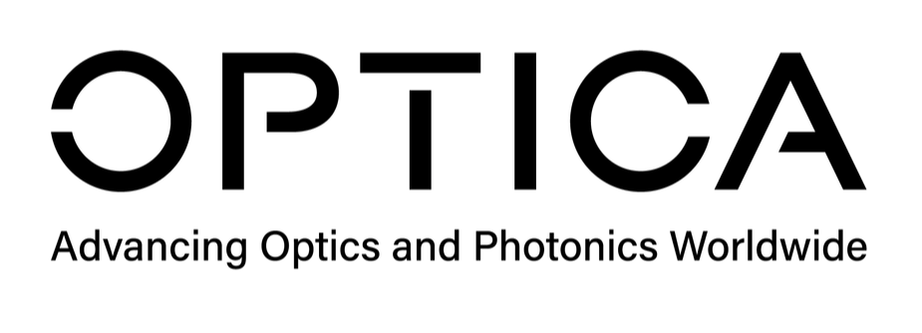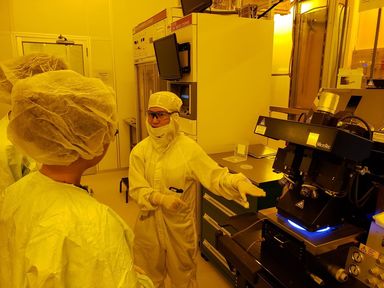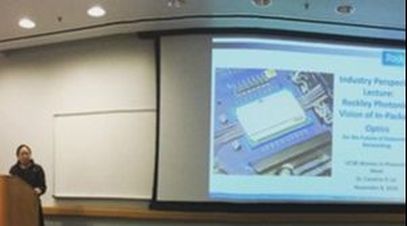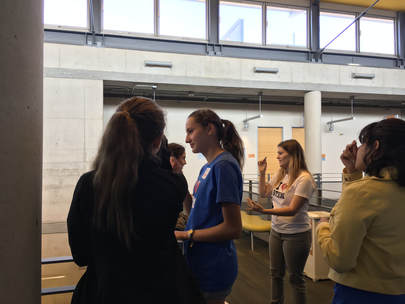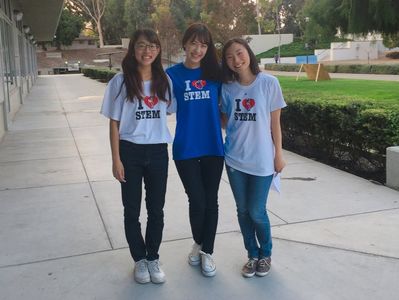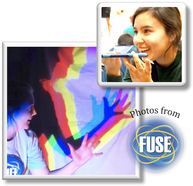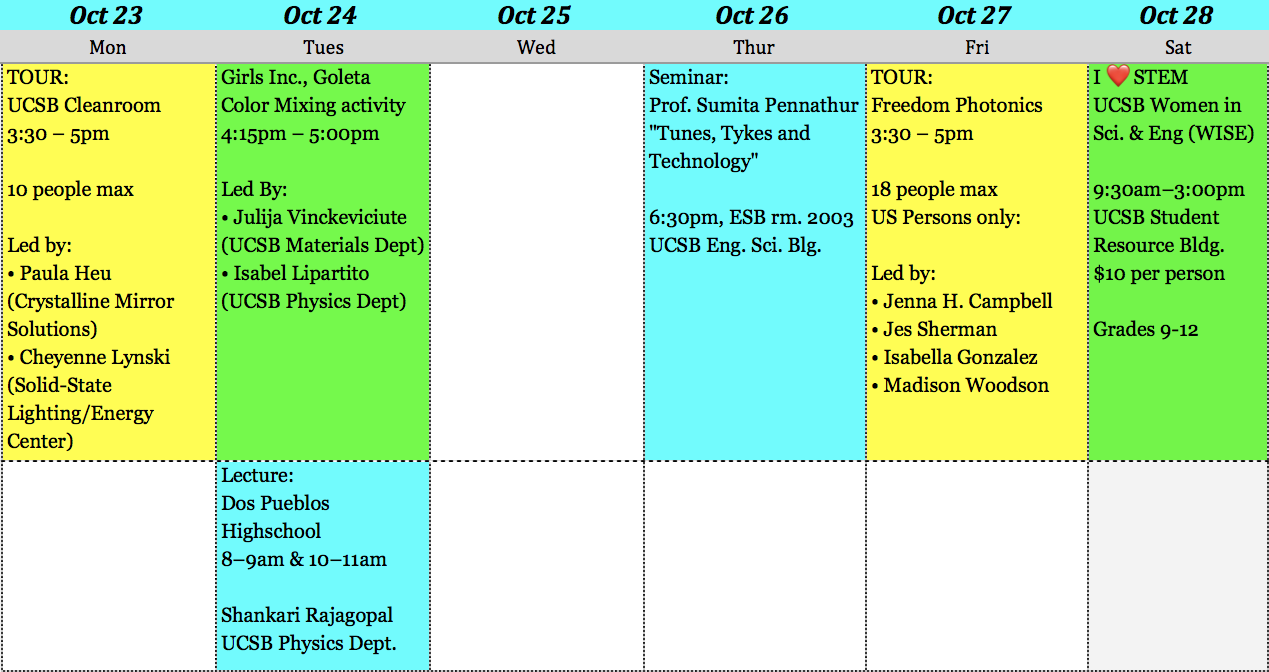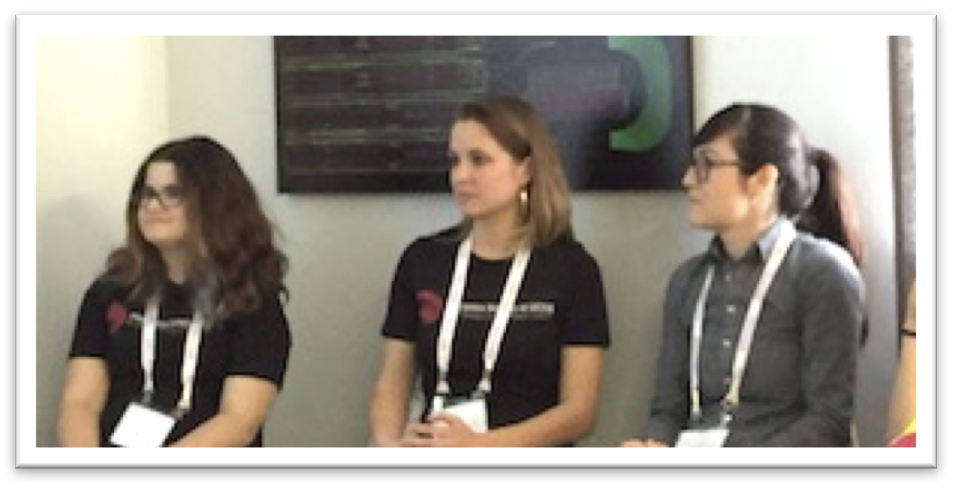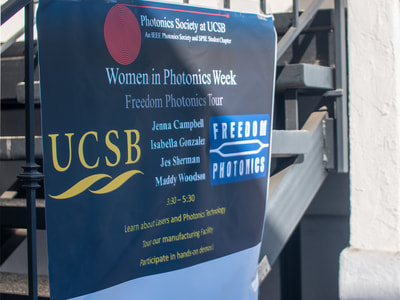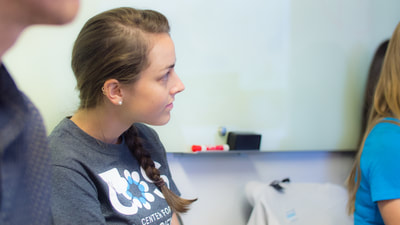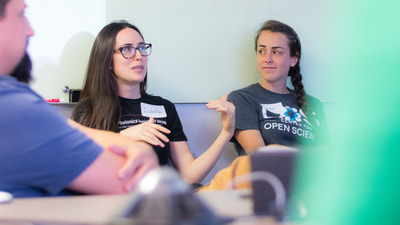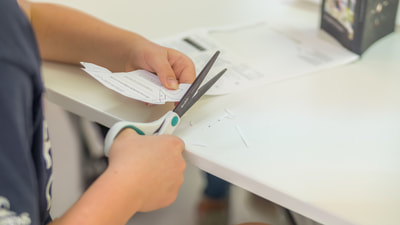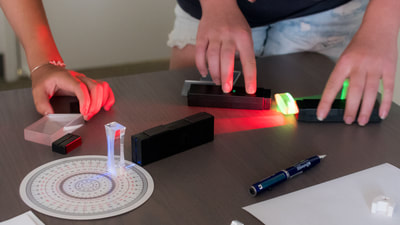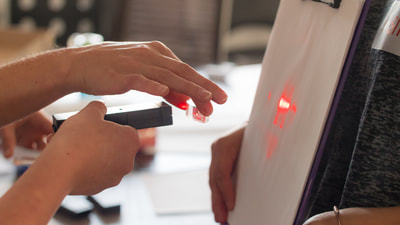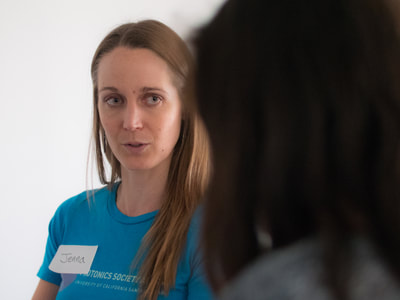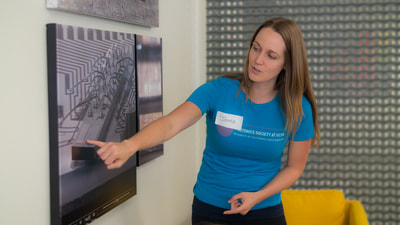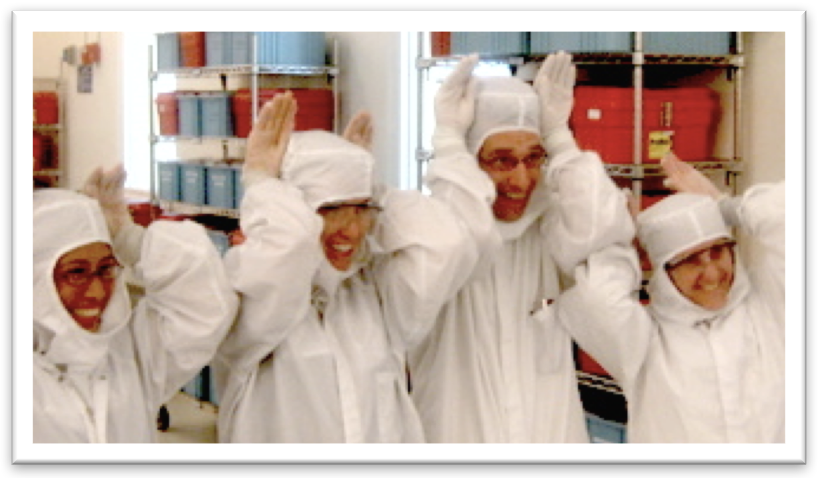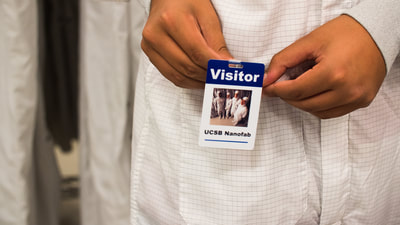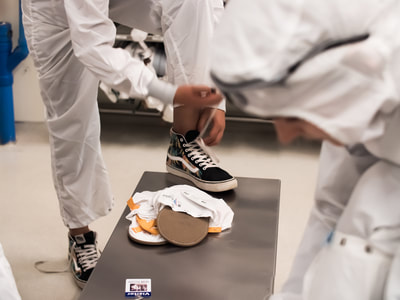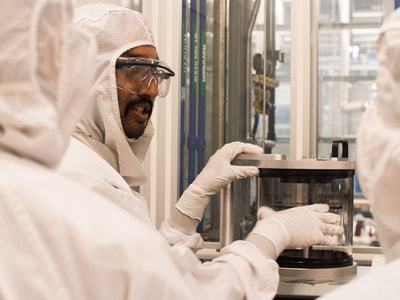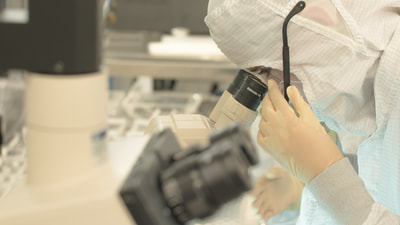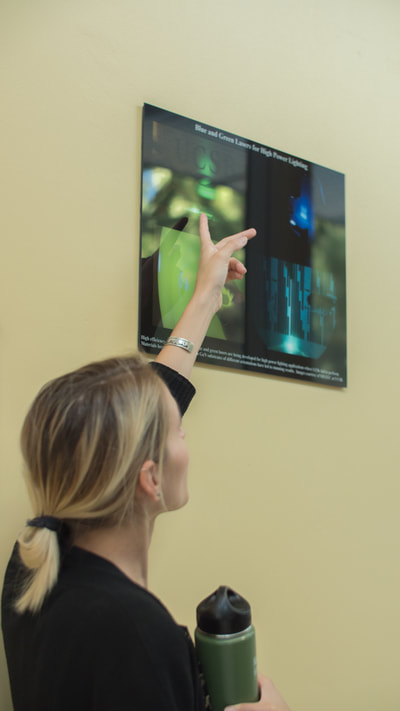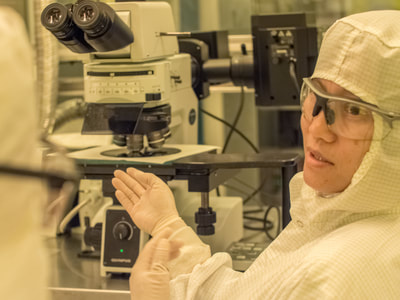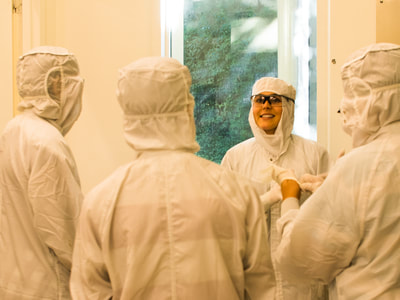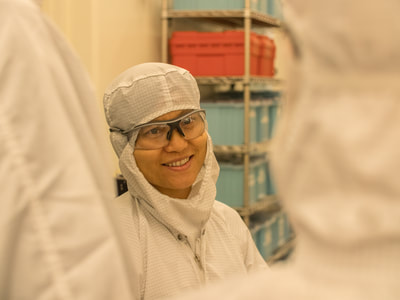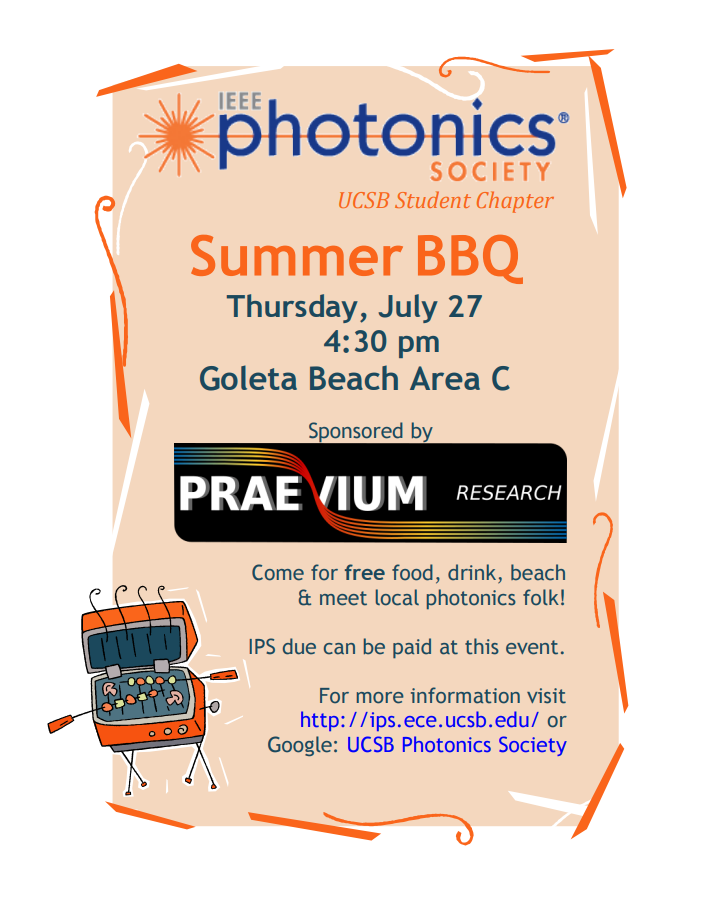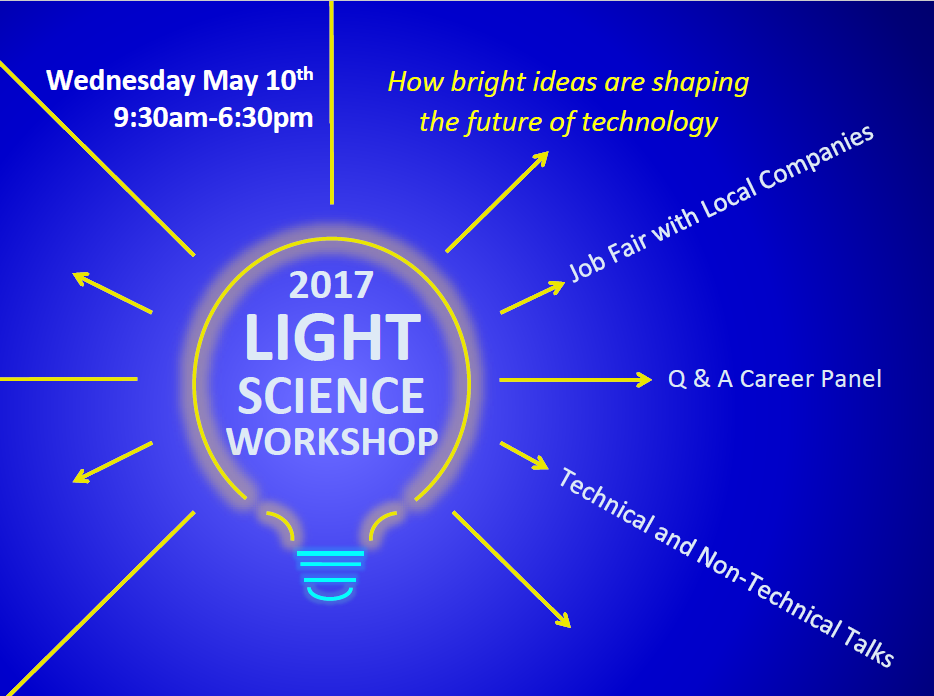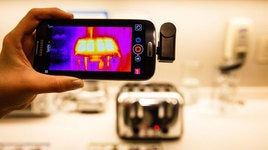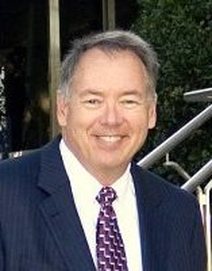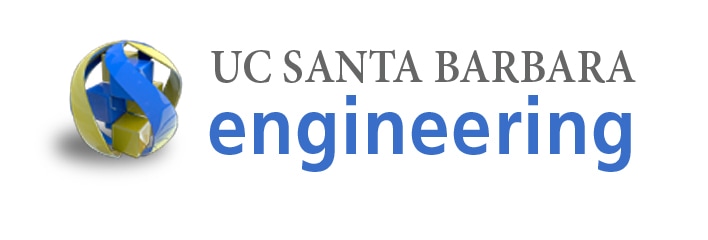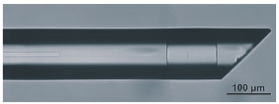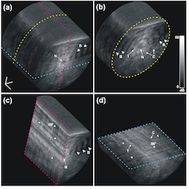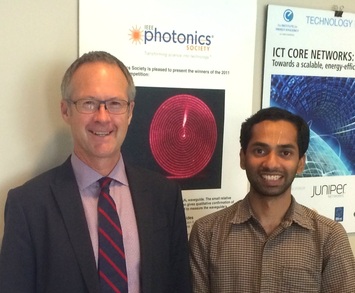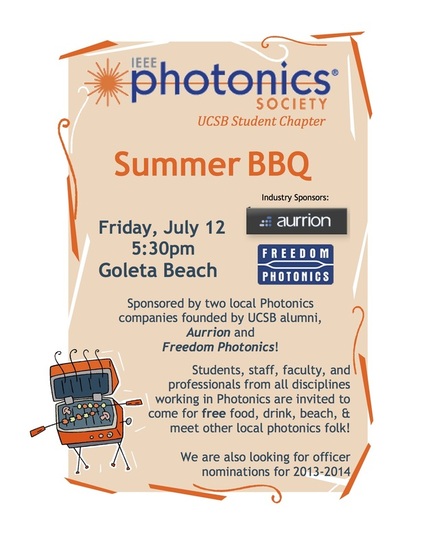|
The UCSB Quantum Foundry and the UCSB Photonics Society hosted the 2021 Quantum Industry Showcase on April 22 and 23. You can watch the Keynote address and the fireside chat below. You can also find more information and presentations from the event at https://qis.quantumfoundry.ucsb.edu/. Like these videos? Watch the full QIS 2021 playlist at
https://www.youtube.com/watch?v=xulQc4G_R9w&list=PLtIKDPzlP_wMvxVLMWlnP-lP6kb7Lr29l Women in Photonics 2018 |
||||||||||||||||||||||||||||||||||||||||||||||||||||||||||||||||||
|
Freedom Photonics Tour
Friday Oct. 27th, 3:30pm – 5:00pm Location: 41 Aero Camino, Goleta, CA 93117 (map) Age Limit: Junior High and up The women at Freedom Photonics hosted hands-on photonics (light-science) demos and gave a tour of their cleanroom. Schedule – 3:30pm – 3:45pm: Welcome & Check-In – 3:45pm – 4:15pm: Presentation (open to public) – 4:15pm – 5:00pm: Cleanroom Tour (U.S. Persons ONLY) |
|
UCSB NanoFab Tour
Mon. Oct. 23rd, 3:30pm – 5:30pm Tour Location: UCSB Engineering Sciences Building (map), Age Limit: Grade 6 and up UCSB Scientists gave tours of the UCSB Nanofabrication Facility, where many types of cutting-edge microchips are produced. Women leading the tours talked about the light-science research they perform in the facility, and attendees got to gown up in "bunny suits" and go inside the cleanroom. Tour Leaders:
Schedule: – 3:30pm – 3:45pm: Welcome & Introduction – 3:45pm – 4:15pm: Tour outside the cleanroom – 4:15pm – 5:00pm: Tour inside the cleanroom (groups of 5) |
Sat. Oct. 28th, 9:30am – 3:00pm
Location: UCSB Student Resource Building, Room 1120 (map)
Women in Grades 9 – 12
Organized by UCSB's Women In Science & Engineering (WISE) group, I ❤️ STEM is a one-day conference for women in 9-12th grades. UCSB scientists & graduate students held hands-on workshops on numerous scientific disciplines, including photonics, the science of light.
Victoria Rosborough & Takako Hirokawa of the Photonics Society @ UCSB hosted a light-science workshop at the conference!
The Girls Inc. science activity is being held at the Teen Center at Girls Inc. Goleta, for girls who are already part of this group.
This year, women scientists hosted our new hands-on science activity "Color Mixing", which teaches students about how we see color, and how we can use only three ink colors to reproduce all the colors of the rainbow.
| 2017_-_summer_bbq_flyer_v2.pdf | |
| File Size: | 372 kb |
| File Type: | |
Location: UCSB, Engineering Science Building, Rooms ESB1001, ESB 2001, ESB 2003
The presentations will have two tracks: Technical and non-technical. The Technical Track will feature lectures on cutting-edge research in the area from varying fields that use and manipulate light. The Non-Technical Track will focus on careers in the industry and professional development. Keep checking back on this page for the most up-to-date information!
The event is free for those affiliated with a university or college. Otherwise, general admission to the event is $20.
Agenda
| 9:30AM — 10:30AM | Introduction and keynote speech by Dr. Kevin Riley (ESB 1001) Seeing Heat: Thermal Vision Everywhere you look |
|
| 10:30AM — 12:30PM | Track #1 (ESB1001): Technical oral presentation sessions | Track #2 (ESB2001): Non-Technical oral presentation sessions |
| 12:30PM — 1:30PM | Lunch Break (ESB courtyard) | |
| 1:30PM — 3:30PM | Track #1 (ESB1001): Technical oral presentation sessions | Track #2 (ESB2001): Non-Technical oral presentation sessions |
| 3:30PM — 4:00PM | Snack Break | |
| 4:00PM — 6:00PM | Poster session (ESB1001) | Job fair (ESB courtyard) |
| 6:00PM — 7:30PM | Invite-only cocktail hour | |
Keynote Speech — Seeing Heat: Thermal Vision Everywhere You Look
|
Location: ESB 1001
Time: May 10, 2017 9:30 AM -- 10:30 AM Abstract: Santa Barbara is a world leader in developing infrared technology. Companies on the Central Coast today are developing thermal cameras for a multitude of consumer and industrial applications – from smartphones to automobiles. These and many other applications will be ubiquitous in the next 5-7 years. This market is heating up ! |
|
Biography: Dr. Kevin J. Riley served as President of Teledyne Scientific & Imaging, LLC (TS&I) from 2007-2012. Dr. Riley joined TS&I in January 2007 from Raytheon where he led technology strategy & roadmaps, IR&D planning and CRAD program capture as Vice President of Technology for Raytheon’s Network Centric Systems business unit. He has served on numerous Scientific Advisory Boards including: Executive Committee Network Centric Operations Industry Consortia; AFRL MANTECH Industry Advisory Panel; National Team Aeronautics Research & Development; Aviation Week Net Centric Operations Committee; Advisory Executive in MIT/ARMY Institute for Soldier Nanotechnology; Panelist Defense Systems Management College; Strategic Focus Group for PEO GCSS and Military Sensing Symposia Infrared Detector Advisory Group. Dr. Riley is a graduate of Management of Innovative Technology, Cal Tech; Executive Management, UCLA; Six Sigma Leadership & Six Sigma Specialist, Raytheon Learning Institute; and Business Leadership Program, University of Chicago. He received his BS, MS & PhD degrees from Syracuse University in Physics.
|
Technical and Non-technical Presenters
Optoelectronics Research Group of John Bowers
Dan Blumenthal, Optical Communication and Photonic Integration Group
Phil Lubin, UCSB Experimental Cosmology Group
AIM Photonics
Freedom Photonics
Unite To Light
Center for Science and Engineering Partnerships (CSEP) at CNSi
UCSB Nanofabrication Facility
Event Flyer
| light_science_flyer_v8_web.pdf | |
| File Size: | 737 kb |
| File Type: | |
- Who: Prof. Dan M. Marom, Dept. of Applied Physics, The Hebrew Univ. of Jerusalem
- When: Tuesday July 22nd, 2:00pm
- Where: Eng. Sciences Building, Room 2001
The recent introduction of space-division multiplexing (SDM) to the optical communication domain with new fiber types, in order to economically support the exponentially growing capacity, necessitates complementary components for implementing SDM-WDM optical networks. SDM is typically realized with either multi-core or few-mode fibers and great capacity achievements have been demonstrated to-date in each fiber solution. Wavelength-selective switching functionality for these two fiber types has recently been introduced. A joint- switching WSS concept has been realized for multi-core fibers, enabling information to be encoded and routed on the SDM-WDM optical network as a spatial super-channel (single wavelength channel spanning multiple cores). This spatial super-channel routing concept with joint-switching WSS also extends to few- mode fibers. Hence a single WSS can then be used in analogous fashion to the single-mode fiber networks, thereby heralding the cost-savings benefits of SDM. A WSS with direct few-mode fiber interfaces has been demonstrated with the few-mode beams routed in free-space just as the single mode beam does in a conventional WSS. A study on the pass band filtering effect and mode mixing due to the spectral switching of dispersed components revealed the spatial-spectral interplay in the mode-dependent loss attributes of the few- mode fiber WSS. Such advanced WSS prototypes will serve the next generation transport networks when SDM is fully adopted by carriers.

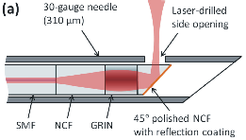
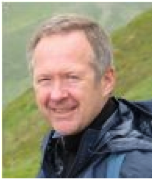
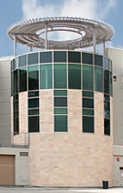
When: Thursday April 24th, 6pm
Where: UCSB Mosher Alumni House (map)
- Graduate Students: FREE
- Non-Students: $15
- Dinner & Drink included
The first annual Photonics Society Banquet was held on April 24th, at the Mosher Alumni house on the campus of the University of California Santa Barbara. The banquet is intended for Photonics scientists from academia and industry to get together, while also learning about early photonics research in the Santa Barbara area. The event includes a social hour and catered dinner (included in ticket).
Following a dinner & social hour, Dr. Jerry Wyss of Toyon Inc. delivered a lecture on
"Photonic RF Antennas in the Goleta Valley - A Historical Perspective".
Dr. Jonathan Doylend from Intel also presented, giving some insight into Intel's photonics research.
The event sold out, with about 70 people attending.
We hosted 10 different companies and 11 research groups (and 2 non-UCSB universities), comprising 21 different photonics groups in the Santa Barbara area!
See some photographs from the event below!
| View the talk abstract and Dr. Wyss' bio at this link, in the full flyer: |
| ||||||
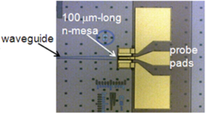
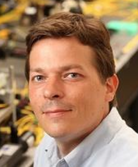
In my talk, I provide a brief introduction to photodiode fundamentals, considerations of material systems and basic structures. I present state-of-the-art 145 GHz-waveguide photodiodes and high-power photodetector arrays that have been successfully operated at bitrates as high as 160 Gbit/s and discuss the development of an integrated dual-polarization coherent receiver that has become a key component in today’s 100 Gbit/s and emerging 400 Gbit/s fiber optic links. I cover novel device structures and photodiode arrays that enabled photonic generation of highly linear microwave signals at record-high output power levels. This includes heterogeneously integrated InP-based photodiodes on silicon that achieved the highest saturation current-bandwidth products on a silicon photonics platform to date.
Bio: Dr. Andreas Beling received the Dipl.-Phys. degree (M.S.) in physics from the University of Bonn, Germany, in 2000 and the Dr.-Ing. degree (Ph.D.) in electrical engineering from Technical University Berlin, Germany, in 2006. He was a staff scientist in the photonics division at the Heinrich-Hertz-Institut in Berlin in 2001-2006, a Research Associate in the Department of Electrical and Computer Engineering at the University of Virginia in 2006-2008, and has two years of industry experience as a project manager working on optoelectronic receivers for high-speed fiber optic communication systems. He returned to University of Virginia in late 2010 as a Research Scientist and became Assistant Professor in the Department of Electrical and Computer Engineering at U.Va in 2013. His research interests include high-speed photodiodes, photonic integration technologies, and optoelectronic receivers for digital communications. Andreas Beling has authored or co-authored more than 100 technical papers, two book chapters, and three patents. He is a member of the IEEE Photonics Society and the Optical Society of America.
Confessions of a Serial Entrepreneur: 30 Years of Photonic Start-ups in Academia and Industry
9/16/2013
- Who: Dr. Simon Poole, New Business Ventures, Finisar Corp., Australia
- When: 2pm, Monday, August 16th, 2013
- Where: ESB 1001 (Eng. Sciences Bldg.)
Every company – even the largest household names such as Google or Apple or even IBM - begins life as a start-up. Drawing on experience gained from Dr. Poole’s extensive start-up history, this presentation will look at how some of the companies and research groups in which Dr. Poole has been involved got started, what they did and how they subsequently developed and thrived. The presentation aims to inspire researchers who are considering how to commercialize their research to take the next steps and move out of the research lab and into the brave new world of commercialization.
Dr. Simon Poole is an engineer/entrepreneur with over 30 years experience in photonics in research, academia and industry. He has been involved in numerous successful start-ups in both Academia and industry and is renowned for both his contribution to the technology of photonics as well as the companies he has founded.
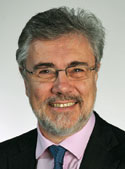
Dr. Simon Poole is an engineer/entrepreneur with over 30 years experience in photonics in research, academia and industry. He obtained his PhD from Southampton University in 1987 and was a member of the team that invented the Erbium-Doped Fiber Amplifier (EDFA) in 1985. In 1988 he moved to Australia and founded the Optical Fiber Technology Centre (OFTC) and subsequently Australian Photonics Cooperative Research Centre (APCRC) at the University of Sydney where he was director of the Sydney Node from 1991 to 1995. The APCRC grew to over 150 researchers and led to 15 start-ups which raised a total of over $250m in Venture Capital funding.
In 1995, Dr. Poole led the first spin-off company from the APCRC, Indx Pty Ltd which manufactured Fiber Bragg Gratings (FBGs) for optical communications. Indx was acquired by Uniphase Corporation (now JDS Uniphase) for $US6m and subsequently grew to over 300 people with exports of over $100m pa. After leaving JDSUniphase in late 2000 he worked as a venture partner with KPLJ Ventures before co-founding Engana Pty Ltd in September 2001.
As Engana’s CEO Dr. Poole raised $13m in VC funding and oversaw the development and launch of Engana’s market-leading Dynamic Wavelength Processor line of Wavelength Selective Switches in early 2005. The company, now Finisar Australia, employs 280 people in Sydney and a similar number in China, with annual sales of Wavelength Selective Switches of >$100m pa.
In 2008, Dr. Poole started a new group within Finisar, the New Business Ventures Group, to generate new, high value added businesses using the principles of Open Innovation. The first business within this group was the highly successful WaveShaper range of Programmable Optical Processors which already has sales of over $6m pa.
Dr. Poole is a Fellow of the IEEE in 2001 and is also a Fellow of the Institute of Engineers Australia (FIEAust), a Senior Member of the Institute of Engineering and Technology (SMIET) and a Chartered Engineer (CEng). He has published over 150 refereed papers in journals and international conferences as well as filing 7 patents, including the initial patent on the EDFA.
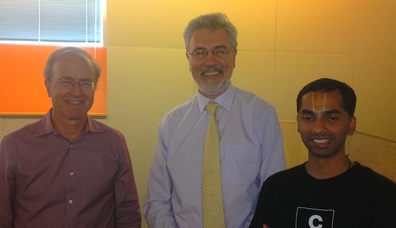
Prof. John Bowers, Dr. Simon Poole & IPS President Sudha Srinivasan after Dr. Poole's lecture.
Dr. Simon Poole gave a fantastic lecture, attended by researchers from many fields beyond photonics.
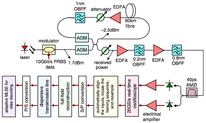
- Who: Dr. Andrew Ellis
- Professor, Photonic Systems Group, University College Cork, Cork, Ireland
- When: March 22nd, 2pm
- Where: ESB 2001
With the remorseless growth in demand for telecommunication services, the capacity of optical fiber links first exceeded the capabilities of electronics, requiring the introduction of wavelength division multiplexing, and is now approaching a fundamental limit.
This limit is due to a trade-off between the familiar Shannon limit at low signal powers, and nonlinear effects at high powers. Before considering the implications of the capacity crunch when demand finally hits this limit, this lecture will review the technological achievements which took the industry from its first commercial service with the Dorset (UK) police in 1975 through to the 10 Tbit/s systems of today.
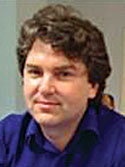
Dr. Andrew Ellis was born in Underwood, England in 1965 and gained a BSc in Physics with a minor in mathematics from the University of Sussex, Brighton, England in 1987. He was awarded his PhD in Electronic and Electrical Engineering from The University of Aston in Birmingham, Birmingham, England in 1997 for his study on All Optical Networking beyond 10 Gbit/s.
He previously worked for British Telecom Research Laboratories as a Senior Research Engineer investigating the use of optical amplifiers and advanced modulation formats in optical networks and the Corning Research Centre as a Senior Research Fellow where he led activities in high speed optical component characterization. Currently, he heads the Transmission and Sensors Group at the Tyndall National Institute in Cork, Ireland, where he is also a member of the Department of Physics, University College Cork. He is also an adjunct Professor of Electronic Engineering at Dublin City University, and a founder of the Dublin based start-up Pilot Photonics. He research interests include all optical OFDM, optical and electrical signal processing, the mechanisms limiting capacity in optical communication systems, and the application of photonics to sensing.
Dr. Ellis is a member of the Institute of Physics and the Institute of Engineering Technology, and is a Chartered Physicist. He is an Associate Editor of Optics Express and acts as a reviewer for IEEE Journal of Lightwave Technology, Photonics Technology Letters and Journal of Selected Topics in Quantum Electronics. He has published over 150 journal papers and over 24 patents in the field of Photonics.
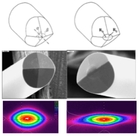
- Who: Dr. Wood-Hi Cheng
- Professor, National Sun Yat-sen University, Kaoshiung, Taiwan. Institue of Electro-Optic Engineering
- When: Tuesday, Feb. 5th, 2:00pm
- Where: ESB 2001 (Engr. Sciences Bldg.)
| Dr. Cheng's Presentation is available for download here: |
| ||||||
Prof. Cheng and his team have made milestone contributions in a series of works describing photonics packaging technology from the art and science points of view. The lecture will present the photonics packaging technology including the high-coupling packaging design of double-variable-curvature microlens employing fully automated process for higher average coupling efficiency from 980-nm lasers into single mode fibers, reduction of fiber alignment and postweld shift in laser module packaging, packaging of passively mode-locked fiber lasers employing carbon nanotubes or graphene, packaging of high-reliability glass-doped phosphor-converted high-power white-light-emitting diodes, and packaging of 300-nm ultra-broadband Cr-doped fiber amplifier for broadband transmission.
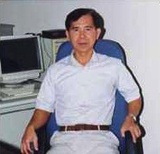
Wood-Hi Cheng is a Chair Professor at National Sun Yat-sen University, Kaoshiung, Taiwan, where he founded and became the Director of the Institute of Electro-Optical Engineering (1994–2000), and Dean of College Engineering (2002–2005). In 2007 he chaired the Southern Taiwan Opto-Electronics Center of Excellence. Presently he is a Program Director of Optoelectronics in the National Science Council of Taiwan providing research grants and direction. Prof. Cheng is a Fellow of IEEE and OSA.
While Dr. Cheng was in the United States, he contributed to the development and growth of high-speed semiconductor lasers with semi-insulating (SI) blocking layers at Rockwell International, CA. In 1987-1993, he was the first to propose and demonstrate low-threshold, high-power, and high-speed 1.3 mm buried crescent lasers with the iron and cobalt-doped SI current blocking layers. He also developed a high-power low-divergence superradiant diode at General Optronics, NJ. In Taiwan, Professor Cheng’s R&D made contributions to photonic package technology and technology transfer to industry (Quarton). Quarton then became the first solid-state laser company in Taiwan, and is currently the top-five sale for laser pointer in world since 1993. He was recipient of the IEEE Photonics Engineering Achievement Award in 2010 for design, development and commercialization compact solid-state laser modules. Prof. Cheng’s most significant R&D is the demonstration of record ultra-broadband 300-nm Cr-doped fibers (CDFs). The CDFs have been used for the first time as a broadband Cr-doped fiber amplifier (CDFA). With the help of optical-fiber system examination for the CDFA, a 40-Gb/s error-floor free data transmission is successfully demonstrated on fiber-optic transmission.
| |||||||
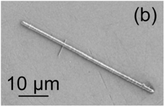
- Who: Dr. Jon Schuller (view website)
- Assistant Professor, Univ. of California Santa Barbara, Dept. of Electrical & Computer Engineering
- When: Oct. 31st, 2012 @ 4:00pm
- Where: Engineering Science Building (ESB), Room #1001
Solid-state lighting and solar photovoltaic devices typically employ optical materials comprising isotropic assemblies of atomic and molecular electric dipoles. Many nanomaterials, however, exhibit optical properties that are inconsistent with these simple models. In this talk we discuss novel optical phenomena arising from oriented “multipole antenna” resonances in organic materials and dielectric nanostructures. We identify multipolar resonances in semiconductor nanowires and show how to exploit these effects to enhance light absorption in ultrathin photovoltaics or to construct materials with optical properties not found in nature. These engineered nanomaterials also serve as models for understanding the optical properties of organic materials. We demonstrate antenna effects arising from oriented intra- and inter-molecular exciton species and describe ongoing efforts to measure and manipulate “forbidden” optical processes in heavy-atom phosphors and molecular H-aggregates.
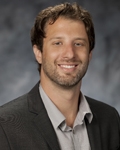
Jon Schuller graduated from the Physics department at UC Santa Barbara in 2003. Afterwards, he joined the Applied Physics department at Stanford University where he received his Ph.D. working with Professor Mark Brongersma. There, Schuller's research interests comprised nanophotonics, plasmonics, metamaterials, and IR spectroscopy. After graduating in 2009, he took a position as a Fellow of the Energy Frontier Research Center, where he applied nanophotonics concepts and techniques towards the fundamental study of solar cell materials and optics. In 2012 Schuller became a "born-again Gaucho," joining the ECE department as an Assistant Professor.
Mailing List
Supported By
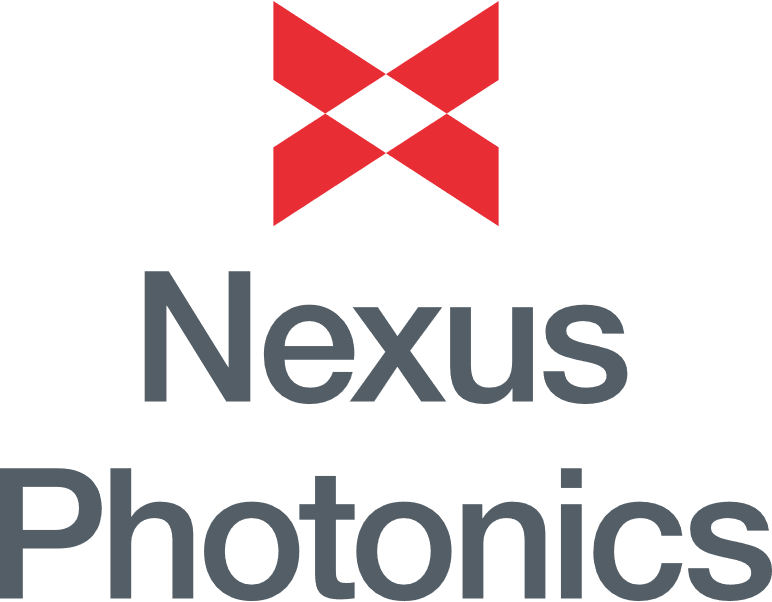
Archives
May 2024
April 2024
March 2024
February 2024
January 2024
October 2023
August 2023
July 2023
June 2023
April 2023
March 2023
February 2023
January 2023
October 2022
September 2022
July 2022
June 2022
May 2022
April 2022
March 2022
February 2022
November 2021
October 2021
September 2021
July 2021
May 2021
April 2021
March 2021
January 2021
December 2020
October 2020
August 2020
May 2020
April 2020
February 2020
January 2020
December 2019
November 2019
October 2019
September 2019
July 2019
June 2019
May 2019
April 2019
February 2019
January 2019
December 2018
November 2018
October 2018
June 2018
February 2018
January 2018
October 2017
July 2017
June 2017
March 2017
February 2017
October 2016
September 2016
July 2016
April 2016
February 2016
January 2016
October 2015
September 2015
August 2015
July 2015
May 2015
January 2015
October 2014
September 2014
July 2014
May 2014
April 2014
March 2014
September 2013
July 2013
March 2013
February 2013
October 2012
Categories
All
Alumni Lectures
Industry Perspective Lectures
IPS Distinguished Lectures
Lectures
OSA Lectures
Outreach Events
Past Events
Social Events
Student Lecture Series

